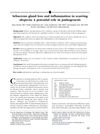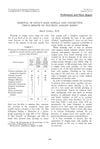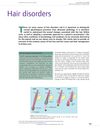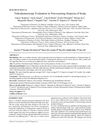TLDR Early treatment of hair-pulling disorder is crucial to prevent permanent hair loss and scarring.
The document described a case of extensive cicatricial alopecia in a patient with long-term trichotillomania. The authors, affiliated with various departments of National Taiwan University and Cathay General Hospital, highlighted the severe and permanent hair loss resulting from the chronic hair-pulling disorder. The letter underscored the importance of early diagnosis and intervention in trichotillomania to prevent irreversible damage to the hair follicles and scalp.
 37 citations
,
June 2011 in “Journal of The American Academy of Dermatology”
37 citations
,
June 2011 in “Journal of The American Academy of Dermatology” Loss of sebaceous glands and inflammation may contribute to the development of scarring alopecia.
 7 citations
,
June 1967 in “Journal of Investigative Dermatology”
7 citations
,
June 1967 in “Journal of Investigative Dermatology” Plucking hairs in a certain way can result in intact hair roots, not related to baldness.
 October 2025 in “Dermatology Practical & Conceptual”
October 2025 in “Dermatology Practical & Conceptual” ChatGPT 4.0 and Gemini 1.5 Flash are effective for educating patients about androgenetic alopecia, while Deepseek R1 is less reliable.
 1 citations
,
December 2010 in “InnovAiT”
1 citations
,
December 2010 in “InnovAiT” The document concludes that accurate diagnosis and appropriate management are crucial for treating various hair disorders, which have significant psychological impacts.
 June 2023 in “International journal of pharmaceutical quality assurance”
June 2023 in “International journal of pharmaceutical quality assurance” Videodermoscopy is effective for diagnosing different types of non-scarring hair loss.
 May 2025 in “Frontiers in Pharmacology”
May 2025 in “Frontiers in Pharmacology” New treatments are needed for non-scarring alopecia due to current limitations.
29 citations
,
January 2023 in “Journal of Clinical Medicine” Psychological interventions can improve mental health and quality of life in people with alopecia.






